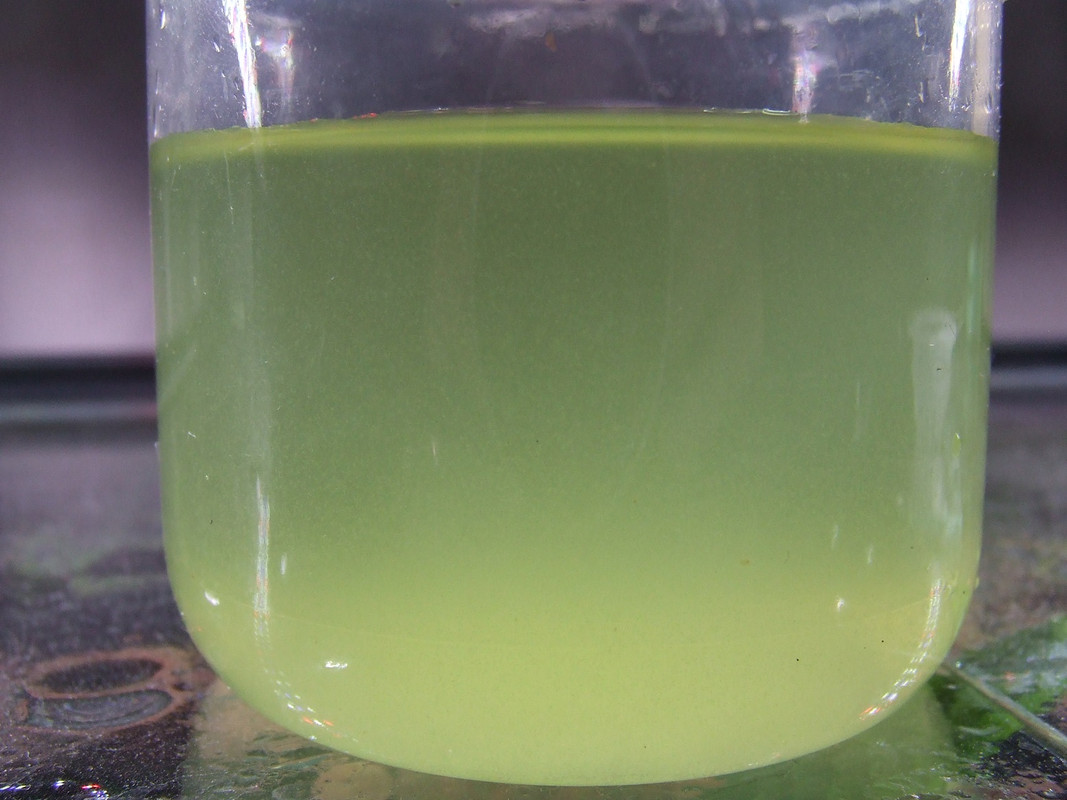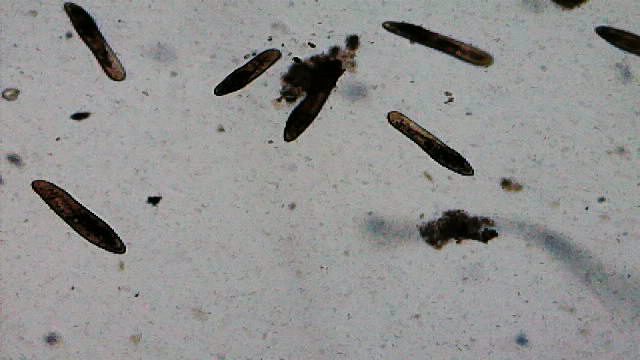Having discovered that some of my fishy residents respond positively to Parameciums I wanted to go into production, as it were. The problem this time round is that their productivity is noticeably reduced when in raw reverse osmosis (RO) water. Some remineralisation seems necessary. The best results I've had of late were with a water recipe for an invertebrate tank ; however one of its ingredients is sodium bicarbonate (aka KH) - which I don't want in my tanks if possible.
I've eventually settled on a 50:50 mix of RO and that invert recipe. As an aside: I add two drops each (from a 5ml syringe) of Seachem's Fresh Trace and Waterlife's Vitazin per litre. The dilution obviously halves the amount of KH that's added to a tank along with a bunch of Parameciums ; but I wanted to do very much better if I could.
My first attempt at filtering out the little blighters from a culture was with my 53-micron sieve. It was geologically slow even with stirring and let too many of the smaller critters through. I then tried coffee filter paper and a funnel but, again, hordes of youths wriggled past security. Then I resorted to YouTube ...
I'm indebted to YouTuber "Kole Scapes" for posting a video which this morning inspired me to construct a Heath-Robinson device which I hope will work! I'll be able to test it tomorrow when the silicone sealant (which I added as an afterthought) has gone off.
I began to copy his method which uses a Kilner jar and laboratory filter paper with a max pore size of 20 microns. I didn't have any of the latter in my museum so bought a box of 100 via Amazon. So ...
We finished off a nearly-empty, 1-litre Kilner jar of home-made chutney and I got a glass ready (could be any other suitable receptacle to catch the waste water) plus those filter paper discs :

The lid's insert thingy was removed ...
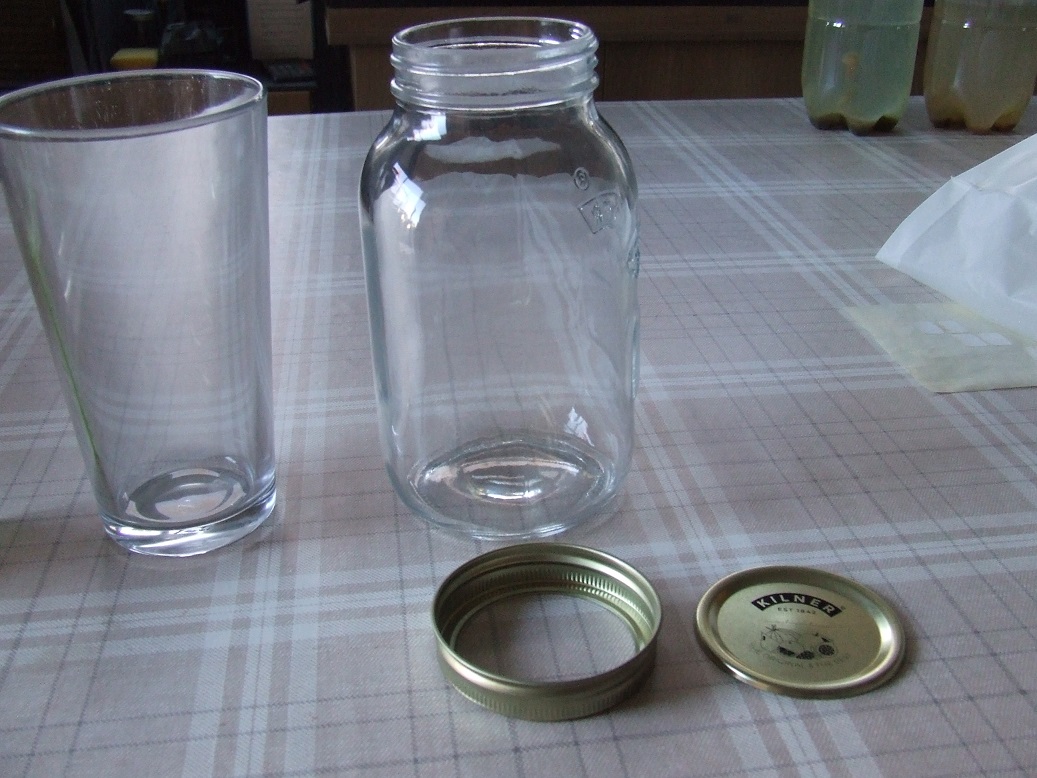
... and a disc of the right size to replace the lid insert was cut out of a piece of the filter paper. Here I had used the twisty-off bit of the lid as a template but it worked very much better when later I drew around the insert :

I installed the now-smaller paper disc in the twisty-off bit and then chose a culture to experiment with. At the moment, while I'm still working towards the 'cleanest' culture I can reasonably manage, I have numerous bottles littering the place. I chose this one (the one with the torch behind it) for my first attempt :
[Wide view]
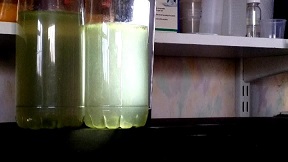
[Close-up]
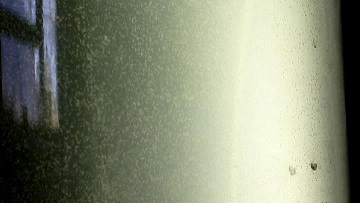
I passed the bottle's contents into the Kilner jar through an Artemia sieve to remove the bigger bits of grot ...
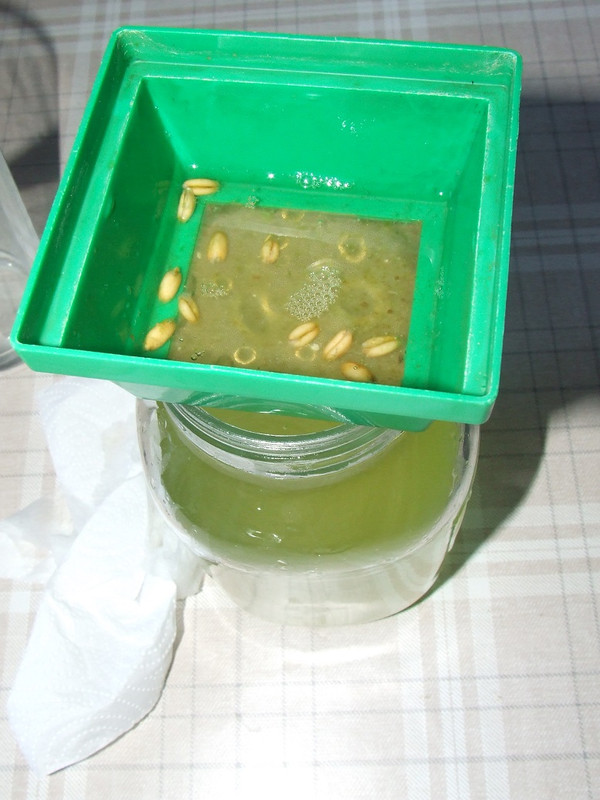
... and then screwed the top (with its paper disc replacing the metal insert) back on the jar which was then inverted and set over the glass/receptacle.
Filtration is everso slow. However the game-changing strategy that Kole Scapes demonstrates in his video employs a syringe to inject air into the jar from underneath, through the filter paper (thus creating pressure). Too much pressure of course bursts the paper, but I didn't even reach that stage! Apparently I haven't a steady-enough hand to enable me to press the syringe's nozzle hard enough against the paper to get bubbles into the jar without quickly puncturing it! So I devised a work-around ...
I bored a 6mm hole in the bottom of the jar with a tubular drill bit. However I didn't want to use any of the usual (potentially nasty) lubricants so I experimented with silicone grease. It worked a treat and was considerably less messy than (say) paraffin :

Acetone seemed to clean up the wound pretty well. But I now have a core of glass stuck inside the drill bit which has resisted every effort made so far to extract it! Anyway ...
I fixed a length of acrylic tube into the hole with Bondic :
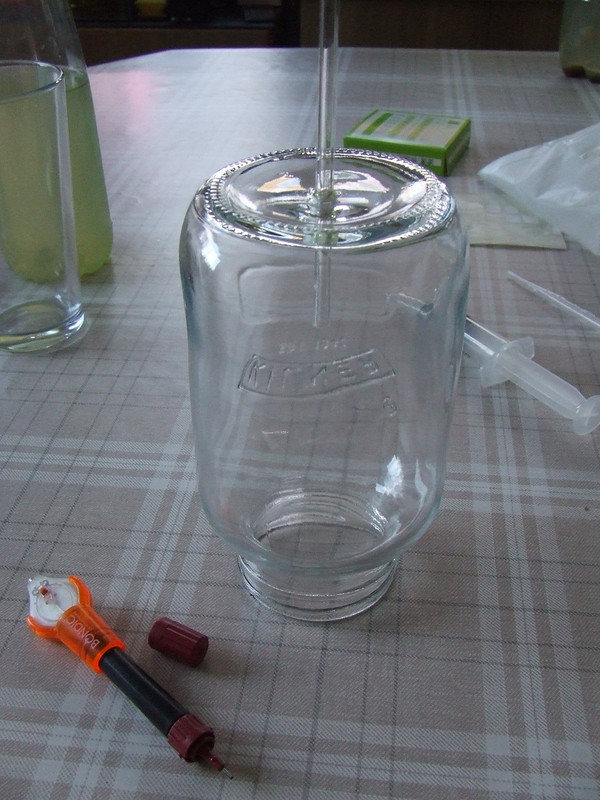
From prior experience I was pretty sure that I'd have an airtight seal already but added a smear of silicone sealant just in case. The rig was completed with a length of airline and a syringe :
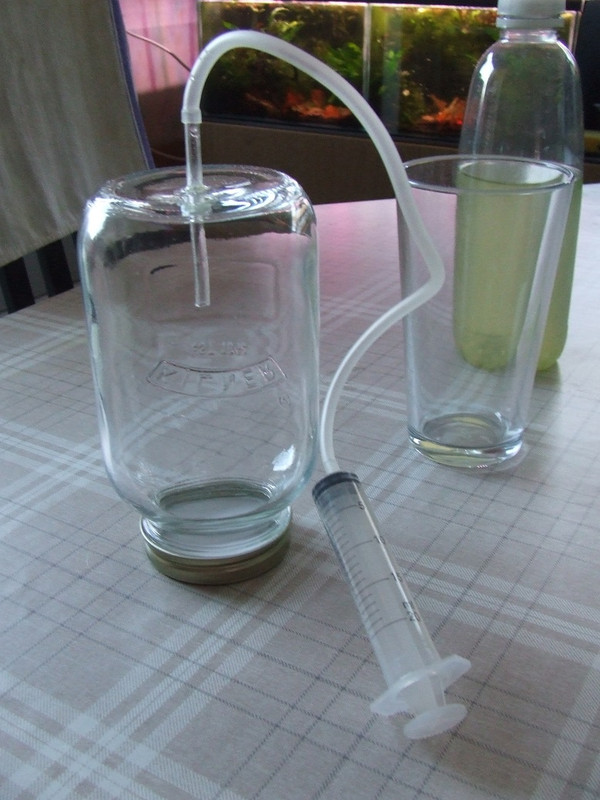
I'll test it tomorrow and report back. Fingers crossed!






